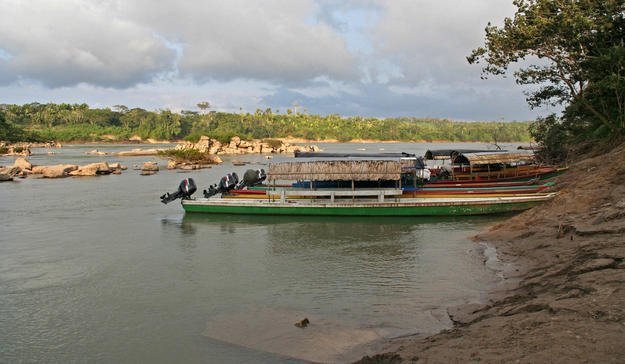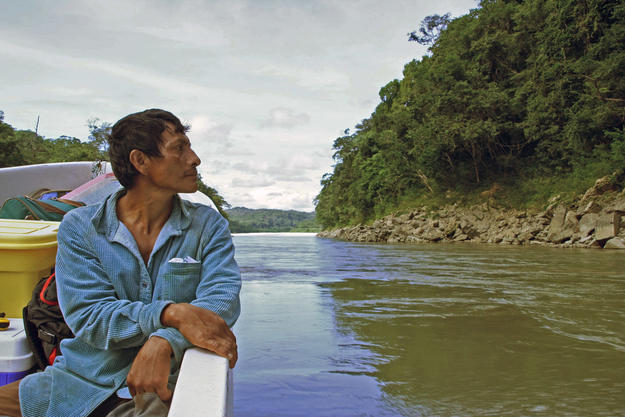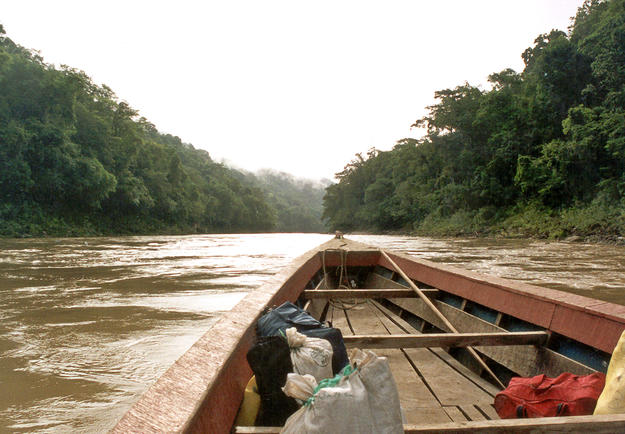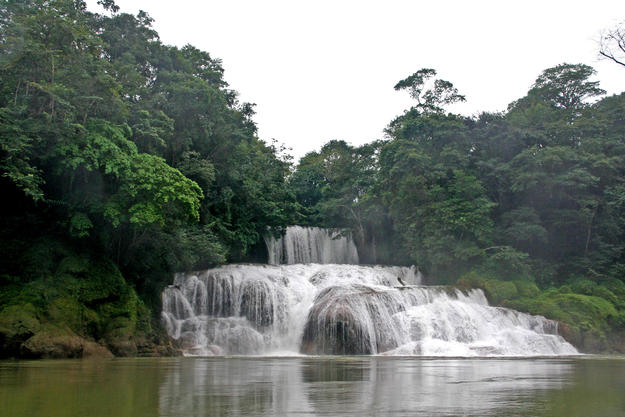2000, 2002 and 2004 World Monuments Watch
The unique ecological basin of Usumacinta River Valley was home to centuries of Maya history. Today, the river defines the border between Guatemala and Chiapas, in Mexico, but in antiquity its waters lay between the rival Maya cities of Piedras Negras and Yaxchilán. The two settlements, founded in the first millennium B.C., were separated by 25 miles (40 kilometers) of dense jungle and the white rapids of the Usumacinta. Both capitals flourished between 600 and 900 A.D. and most of the monumental architecture dates from the eighth century. Temple pyramids, ball courts, stelae, and magnificent limestone sculptures of Yaxchilán and Piedras Negras provide information about all aspects of culture, including politics and language. Yaxchilán’s hieroglyphic inscriptions describe many battles with their southern neighbors at Piedras Negras for control over the Usumacinta, the region’s foremost trade route along which goods such as salt, cacao, obsidian, jade, feathers, and shells were transported in dugout canoes from Guatemala and Chiapas to the Gulf of Mexico. Smaller archaeological sites and agricultural terraces along the river also reveal Maya activity ranging from Piedras Negras to Yaxchilán. Unfortunately, all of the Maya sites in the Usumacinta River Valley are affected by erosion, looting, and overgrowth, and there is constant pressure to use land for grazing. For decades, the Mexican government has proposed building a hydroelectric dam along the Usumacinta, which, if completed, would jeopardize the region’s Maya legacy. Because of these threats, World Monuments Fund added Yaxchilán to the Watch in 2000 and 2002 and Piedras Negras in 2002 before combining the two sites (and all the archaeological territory in between) into the Usumacinta River Cultural Landscape for the 2004 Watch.
A study made use of NASA and AIRSAR technology
WMF sponsored the initial phases of the development of an integrated management plan for Yaxchilán, and organized a symposium on Yaxchilán and Piedras Negras in 2002, bringing experts together with the community to discuss sustainable tourism and conservation. WMF also commissioned a study which made use of NASA and AIRSAR technology to examine different visual scenarios of the damage that could potentially be caused by building a dam on the river. WMF participated in an international coalition to create an overall preservation strategy and management plan that included tourism promotion, visitor protection, and local involvement in addition to individual conservation projects. On the ground, WMF organized training workshops for caretakers and stabilization began on several structures. WMF continues to contribute funding and expertise to both sites, to participate in conferences and planning sessions, and to advocate for the preservation of this remarkable cultural landscape. Since 1996 when a Maya city, El Pilar in Belize, first appeared on the Watch, WMF has been involved with more than a dozen sites from the ancient Central American empire. Often inaccessible or obscured by thick jungle, these sites present an incredible array of difficulties for conservators but offer an equally impressive collection of art, architecture, and information. With advances made every day, there is much more to learn from studying these cities and the rich historical terrain that lies between them.




